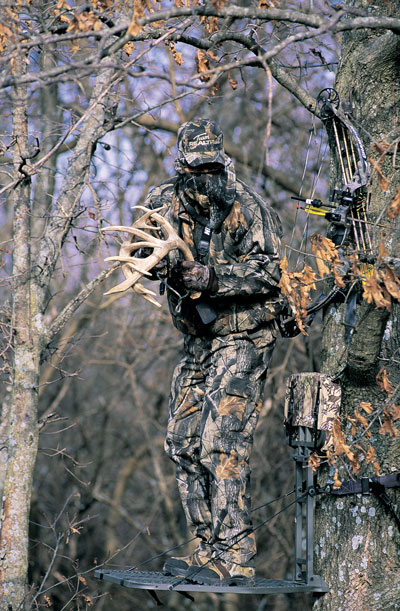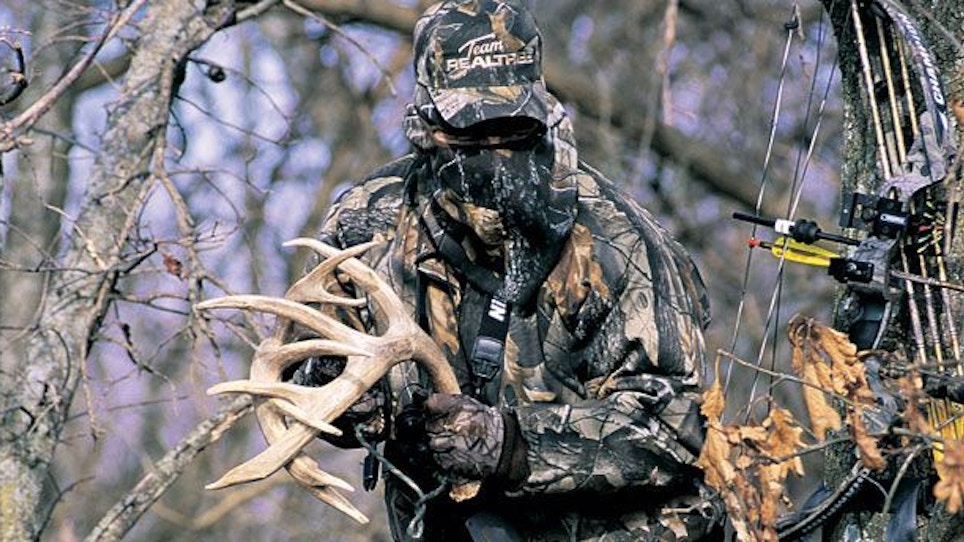 1. After rattling, don’t be too quick to drop your guard. Every buck responds differently to rattling. For all you know, the buck that showed up an hour after your last rattling sequence was standing out of sight 30 to 45 minutes, trying to determine what caused the ruckus.
1. After rattling, don’t be too quick to drop your guard. Every buck responds differently to rattling. For all you know, the buck that showed up an hour after your last rattling sequence was standing out of sight 30 to 45 minutes, trying to determine what caused the ruckus.
2. When the rut is peaking, hot and cold hunts within a hunting group are common. Why? It’s not unusual for one hot doe to tie up three or four amorous suitors. If your treestand is hanging where she happens to walk or run, you’ll think you’re seeing the best rut ever. But if your buddy is a half-mile away, the woods around him might be devoid of bucks.
3. Most buck fights are over before they begin. And even if one of the bucks doesn’t back down, fights seldom last long. Even so, some bucks fight for several minutes and sound as if a tank is barreling through the woods. So, when rattling, mix up your routine with fights of various length.
4. No matter how long your rattling sequences last, it’s critical that you remain well-concealed. Whenever possible, choose treestand sites that provide a good backdrop and multiple trunks.
5. Not all scrape lines or rub lines go dormant once breeding begins. If you find rubs and scrapes in a pinch point or travel corridor that provides the shortest run between two doe bedding areas, a buck just might shoot through while prowling for his next companion.
6. If a buck comes in silently and catches you with your hands still holding antlers, don’t try hanging them up. Drop them to the ground, even if it’s 20 feet below, and let the buck make the next move before reaching for your bow.
7. If hot weather moves in during the rut, realize your odds just plummeted. But don’t give up. Search out water, preferably springs or watering holes on high ground where winds are less tricky. If bucks are courting does all night in the cool evening air, they’ll often look for a drink before bedding down, and then again late in the day before beginning their next night of prowling.
8. Don’t be too quick to abandon a treestand on warm days. Although it is difficult to stay up there all day when you haven’t seen a buck all morning, sometimes those boys make a quick circuit around midday, even in hotter temperatures.
9. Scrape-line hunting, even in the best circumstances, is a relatively low-odds endeavor. But low odds are better than no odds. Bowhunters sometimes have inflated hopes. Research shows up to 90 percent of scraping activity occurs at night. But that still leaves 10 percent, right? Remember, though, that mature bucks are least likely of all to show up at scrapes in daylight. Therefore, if you hunt scrapes, hunt those closest to bedding grounds—if you can get in there without spooking him.
10. Do treestands have you stuck in a rut? If you feel tortured sitting in a tree all day, consider your hunting alternatives. Instead of snoozing in the truck, grab your binoculars and spotting scopes, find some high ground, and look for bucks bedded in brushy fence rows. Stalking bucks is never easy, but it offers better odds than watching TV or socializing with other frustrated bowhunters.
11. Another good way to spend the midday hours, whether the rut is on or not, is to stalk cornfields on windy days. If you thought ahead, you marked “dead” spots within the field that were water-soaked when the field was seeded. These spots often hold high grass, which bucks sometimes use for secure bedding sites. Or so they think.
12. Never be afraid to experiment with grunts and bleats. One of the most effective doe bleats I use sounds almost like a Hereford cow calling for her calf. I’ve never heard a real whitetail doe make such a sorrowful sound in the deer woods, but I’ve bow-killed at least three bucks that came to investigate the call, and none appeared suspicious, just curious.






